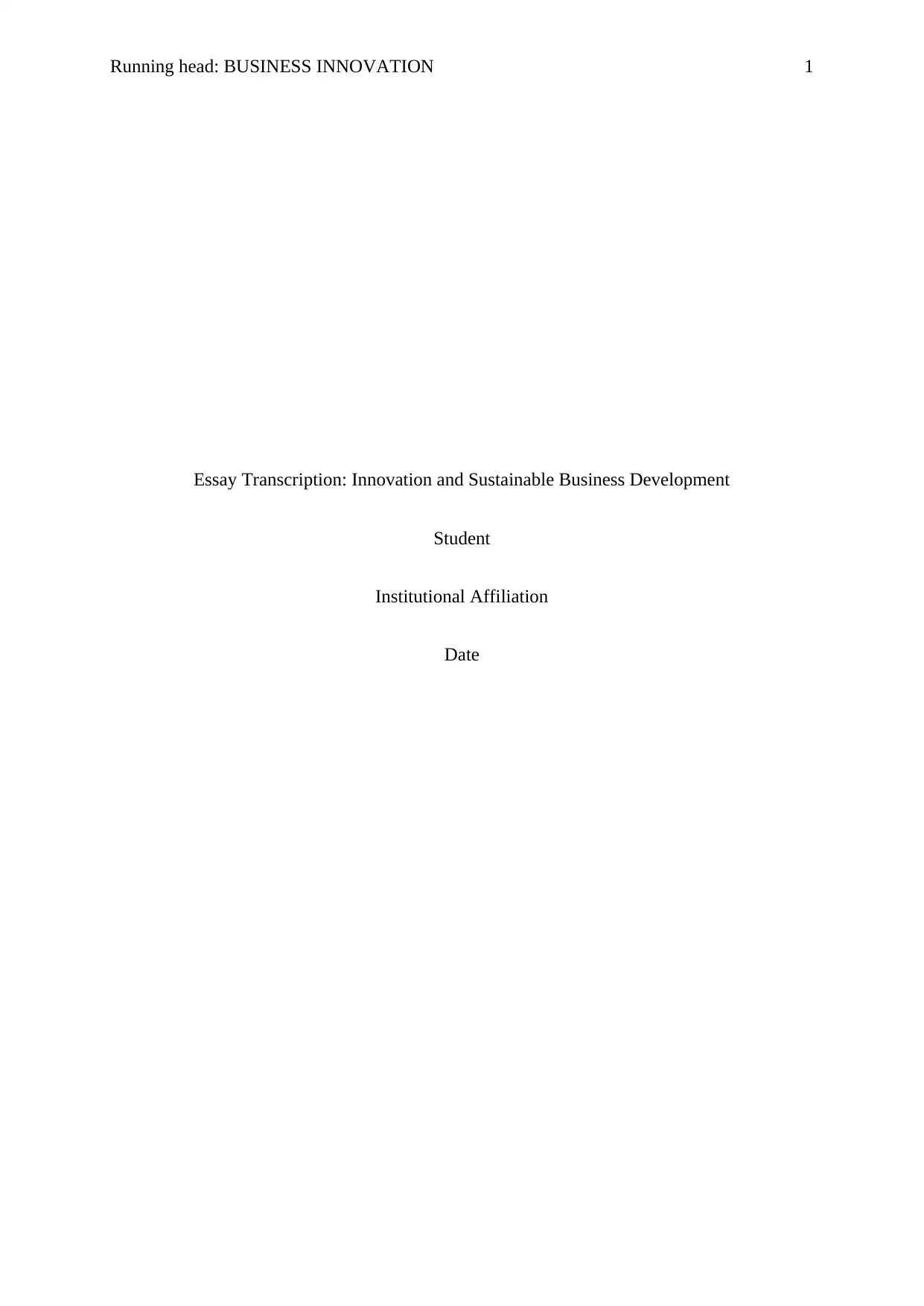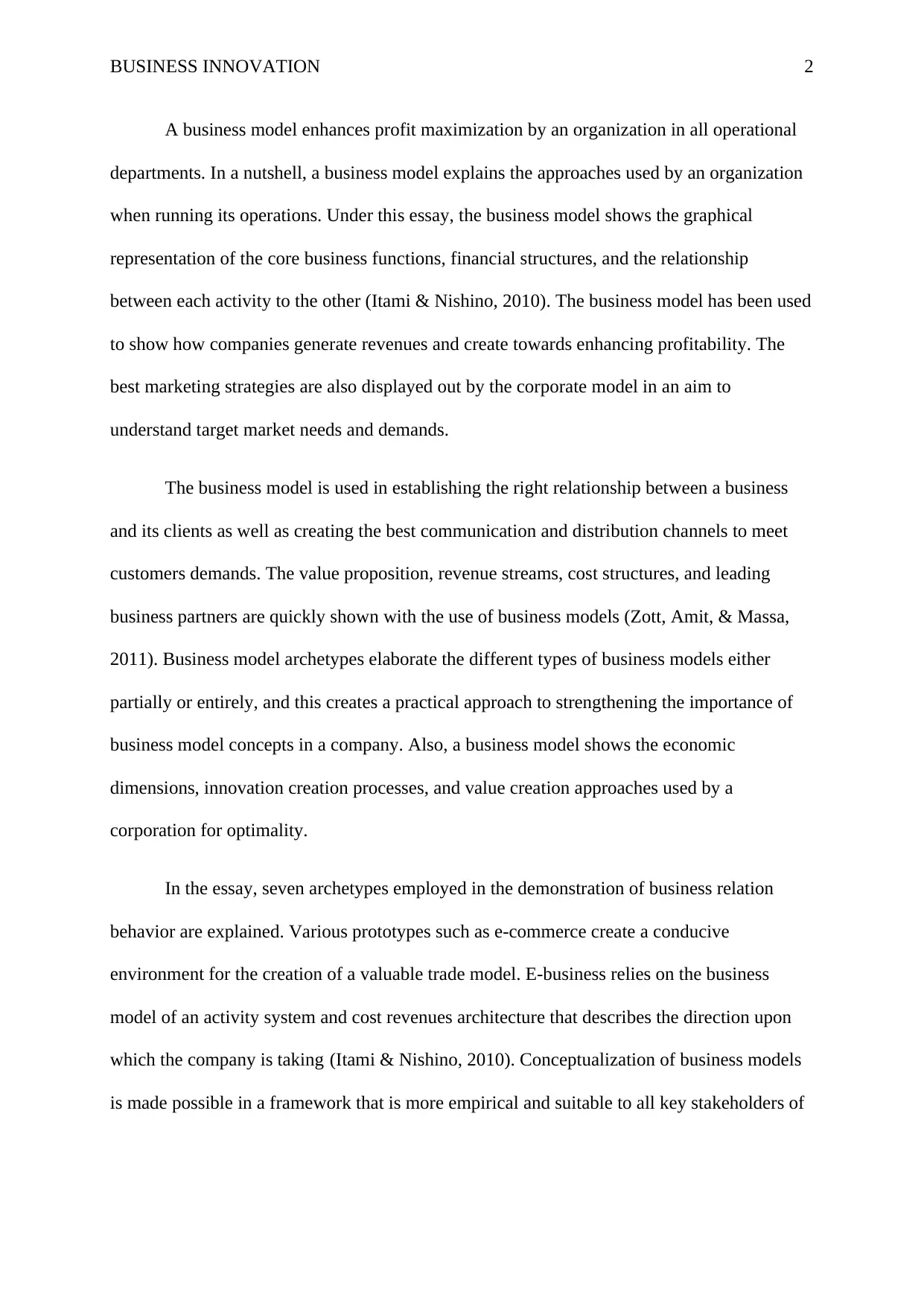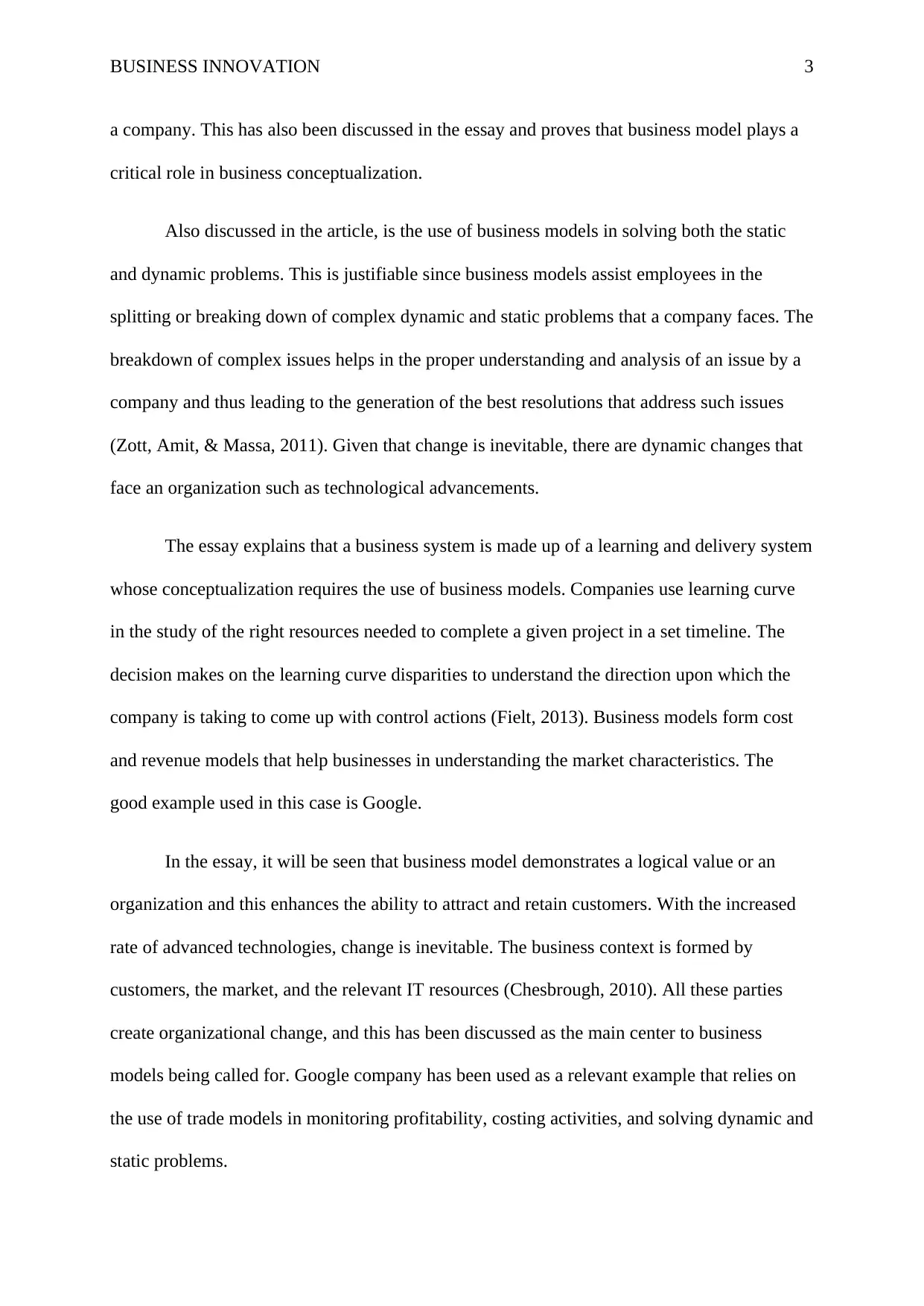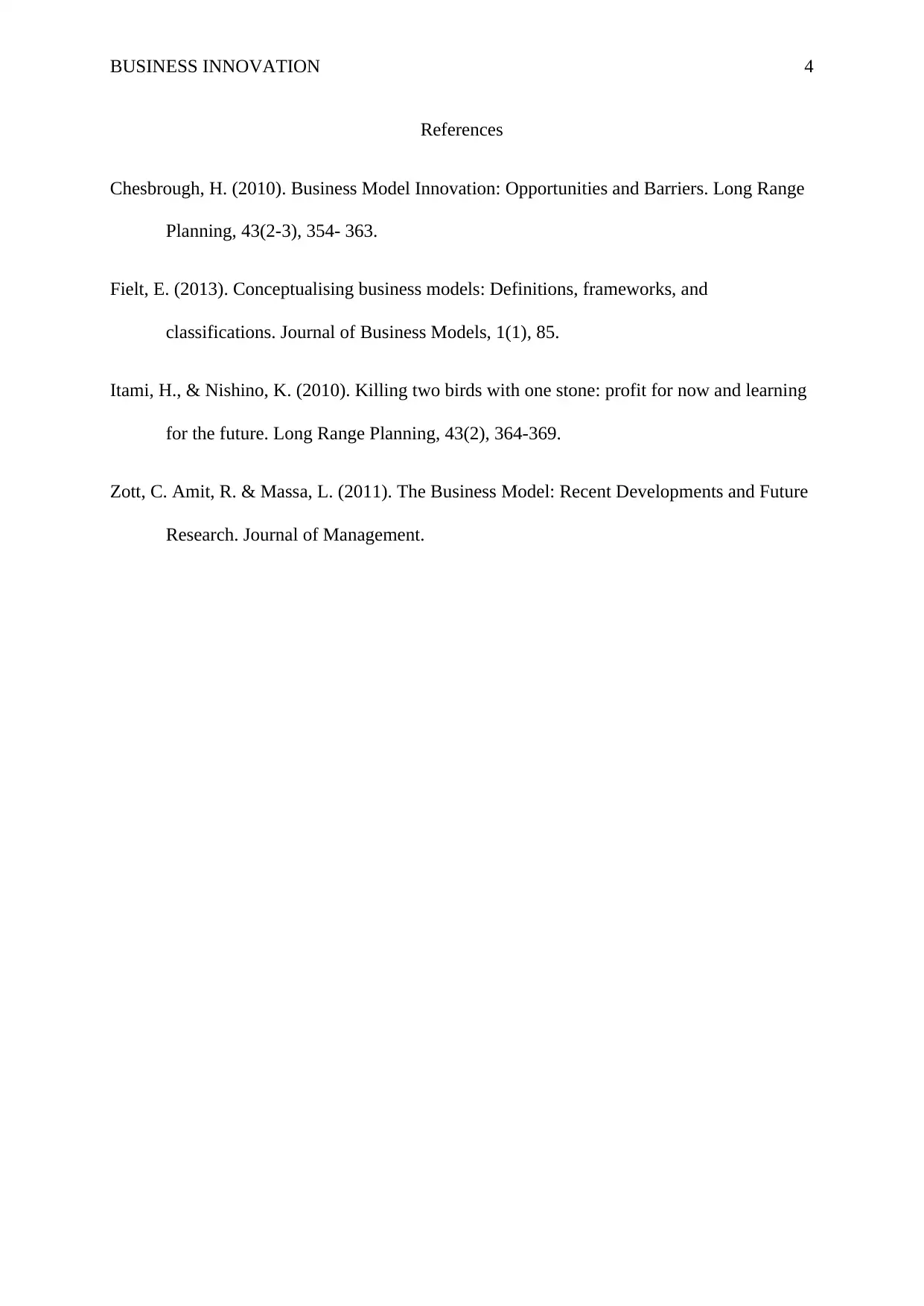Essay: Business Innovation and Sustainable Business Development
VerifiedAdded on 2020/02/24
|4
|820
|45
Essay
AI Summary
This essay delves into the significance of business models in enhancing profit maximization and guiding operational strategies. It illustrates how business models graphically represent core business functions, financial structures, and the interplay between various activities. The essay emphasizes the role of business models in revenue generation, marketing strategy development, and establishing strong client relationships. It highlights the importance of value propositions, revenue streams, and cost structures. The essay then explores business model archetypes, including e-commerce, and discusses their role in conceptualizing business models and addressing dynamic business challenges. It also uses Google as a case study to demonstrate the practical application of business models in monitoring profitability, costing activities, and solving both static and dynamic problems. The essay concludes by underscoring the necessity of adapting to technological advancements and the role of business models in fostering organizational change.
1 out of 4











![[object Object]](/_next/static/media/star-bottom.7253800d.svg)